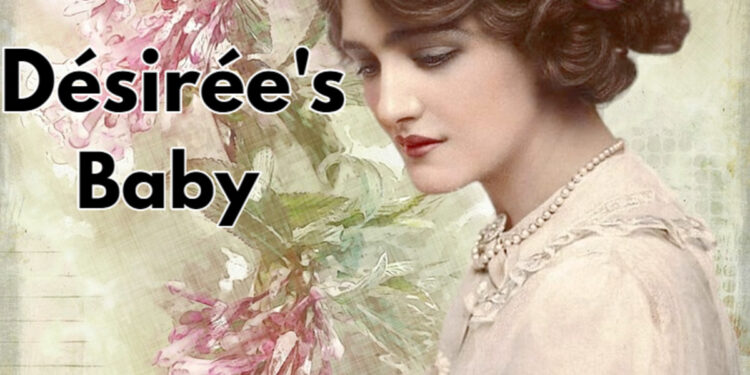An Evaluation of Desiree’s Baby Summary by Kate Chopin
“Desiree’s Baby” is a short story by Kate Chopin, an American author known for her exploration of themes related to gender, race, and societal constraints. This story, first published in 1893, takes place in Louisiana in the antebellum period and revolves around issues of race, identity, and the consequences of societal norms.
Summary Of Desiree’s Baby
The story opens with the introduction of Desiree, a foundling who is adopted by the Valmonde family. She is raised with love and care but is troubled by the mystery of her parentage. As she matures, Desiree’s beauty attracts the attention of Armand Aubigny, a wealthy plantation owner. They marry and have a child, whom they affectionately name their “baby.”
Even though he and Desiree are both of European ancestry, Armand observes that the baby’s skin is becoming darker as the youngster gets older. Armand accuses Desiree of having African ancestry, thereby disowning her and the child, in a brutal and unexpected turn of events. Desiree begs to be believed innocent, but Armand won’t give up.
In the end, Desiree leaves with the baby and disappears into the bayou, never to be seen again. Armand burns all of Desiree’s belongings, and the story concludes with the shocking revelation that it was Armand, not Desiree, who had African ancestry.
An Evaluation of Desiree’s Baby Character Analysis:
- Desiree: The protagonist of the story, Desiree, is depicted as gentle, loving, and initially happy in her marriage to Armand. Her character undergoes a profound transformation as she faces accusations of her racial background, ultimately leading her to make a difficult decision for the sake of her child.
- Armand Aubigny: Armand is a complex character, initially portrayed as a loving husband and father. However, he becomes cruel and unyielding when he suspects that his child’s African ancestry may tarnish his family’s name. His actions reveal the deeply ingrained racism and prejudice of his society.
Also Read-
A Rose for Emily Full Summary by William Faulkner
An Evaluation of Desiree’s Baby Themes:
- Race and Identity: “Desiree’s Baby” delves into themes of race and identity, highlighting the arbitrary and often brutal consequences of racial prejudice. The story demonstrates how one’s perceived racial background can lead to ostracism and social rejection, even in the absence of concrete evidence.
- Irony and Deception: Irony is a key thematic element in the story. The ultimate revelation that Armand, not Desiree, has African ancestry underscores the theme of deception. The story explores how people often make assumptions based on appearances and how these assumptions can lead to tragic outcomes.
- Gender Roles: The story also touches on traditional gender roles of the time. Desiree is depicted as submissive and powerless in the face of Armand’s authority, reflecting the limited agency women had in that era.
- Social Prejudices: “Desiree’s Baby” serves as a critique of the social prejudices of the antebellum South. It exposes the racial hierarchies and biases that were deeply ingrained in the culture and that had devastating consequences for individuals who did not conform to the societal norms.
Stylistic Elements:
Kate Chopin employs vivid and evocative language in “Desiree’s Baby” to create a sense of atmosphere and tension. She uses descriptive elements to paint a picture of the Louisiana plantation and its surroundings, which are central to the story’s themes.
The narrative structure is straightforward, following a chronological order that makes the story accessible and easy to follow. Chopin’s prose, while not overly ornate, conveys the emotions and turmoil of the characters effectively.
Historical and Cultural Significance:
“Desiree’s Baby” is set against the backdrop of the antebellum South, a time of deep racial divides and societal norms that condoned slavery and racial discrimination. The story highlights the destructive consequences of these norms and prejudices on individuals and families.
The revelation at the end of the story, where Armand’s own ancestry is called into question, is a striking commentary on the arbitrary nature of race and racial prejudice. It exposes the absurdity of the racial hierarchy that underpinned the antebellum South.














